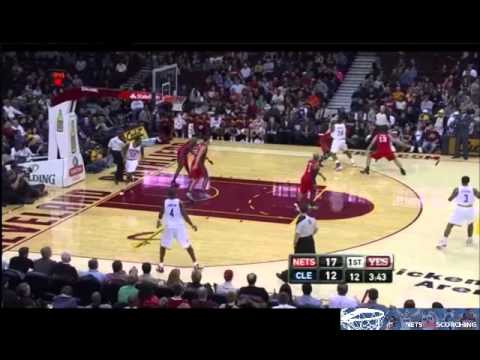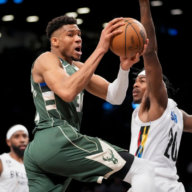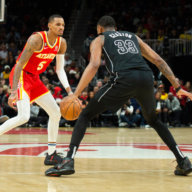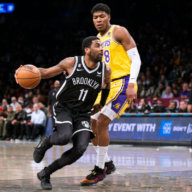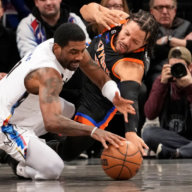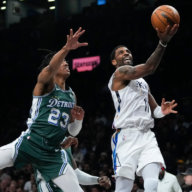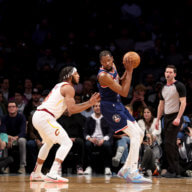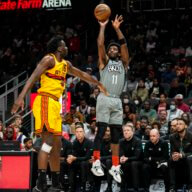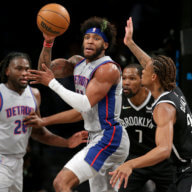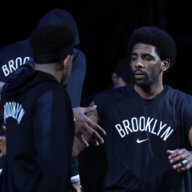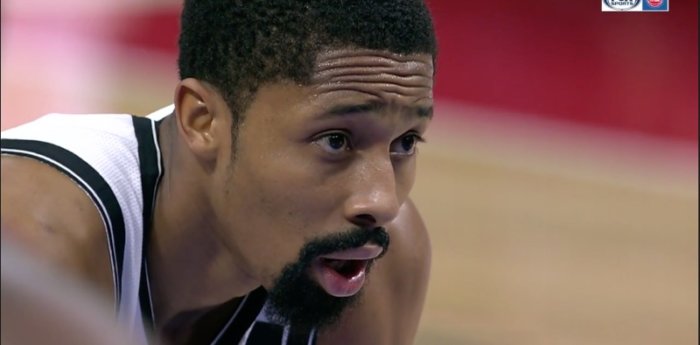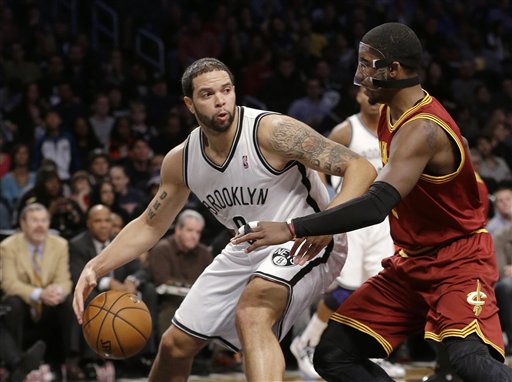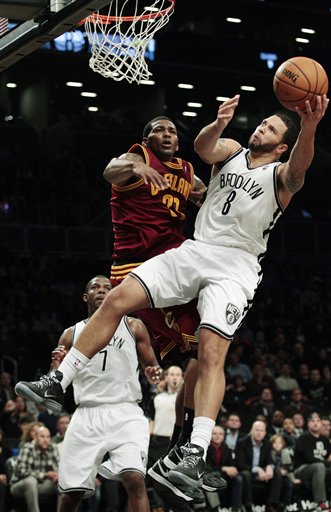Last night, the Nets allowed the Cleveland Cavaliers to shoot at will from beyond the arc throughout the game — an excellent 6-14 in the first half, and a scintillating 10-12 in the second. The Cavs utilized different strategies in each half to score from outside, and their gameplan switch proved too much for the Nets to adjust to in the second half.
Here’s how it happened.
First quarter
In the first quarter, the Cavaliers utilized high screens to create space for the ballhandler on the perimeter, and a lack of communication by Nets defenders only provided them more time.
In this video, the first three shots — all taken from the first quarter — involve a screen on the perimeter, a weak show-and-return by the big man (either Okur or Extra E), and a guard pinned by the screen, unable to work around in time to put a hand in the shooter’s face. This stems from a breakdown in communication, between guard-and-big and/or coach-and-team.
To defend high screens against shooters, the defending big man usually has to show until the guard can work around the screen, or hedge if the guard goes under and retreat to defend the roll once the guard recovers. Unfortunately, both parts of the play broke down; the guards didn’t fight through the screen quickly enough, and the bigs showed early, but retreated to trail before the guards (Gaines, D-Will, Brooks) worked around the screen, leaving space open.
Below are screenshots of those shots at the point of attack, to highlight the space given to shooters:
In the first two, Okur is trailing back to his man before Gaines and Deron have the chance to beat the screen. In the third, Shawne Williams gets trapped behind Tristan Thompson, who’s complicating things by giving Deron a moving screen. The amount of space is more than enough to get a goot shot off, and it results in nine early, easy points for Cleveland.
Second half
In the second half, the Cavaliers barraged the Nets with multiple spot-up looks from beyond the arc. The Cavs deserve credit for making their open looks, the Nets’ atrocious perimeter defense allowed them to get such high-quality looks from deep. Most of Cleveland’s looks still came off the pick-and-roll, but the Nets overplayed the ballhandler and roll man — from all directions — leaving spot-up shooters wide open.
The first two examples in this video tell the same story. Anderson Varejao slid up to set a screen for the ballhander, Okur showed on the screen and was a step late getting back, the weak-side big defender (Damion James in the first play, Kris Humphries in the second) drops down too quickly to cut off Varejao’s look to the rim, and the point guard swinging to the open man (Jamison, Gee) for the wide-open three.
This third play is the same situation, just with Shelden Williams instead of Mehmet Okur:
Once Humphries sees that Shelden abandoned Samardo Samuels completely and slides down, Alonzo Gee is wide open, and it’s too late to stop.
On these last two, you’ll again see the same issue, just with a different cast of characters. The Nets see the ball headed towards the paint, stare at it, attack, and the Cavaliers make them pay by dishing outside for more open looks.
What happened in Cleveland last night was far from rocket science or sorcery. The Cavaliers didn’t get red-hot out of nowhere. The laws of basketball dictate that spacing is king, and the Nets allowed all the spacing in the world. Much is made of a particular offensive tendency to ball-dominate, but that tendency is easily shown on the other side, too; when you commit to one option, that tunnel vision — both in movement and in communication — equates to open looks in the places you’ve forgotten about. Lose your assignment, lose the game. That’s what happened to New Jersey last night, and if they plan on winning any games, they’ll need better communication between all five defenders on these pick-and-roll situations.

